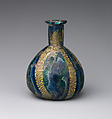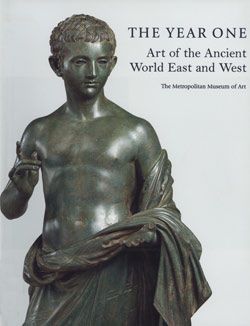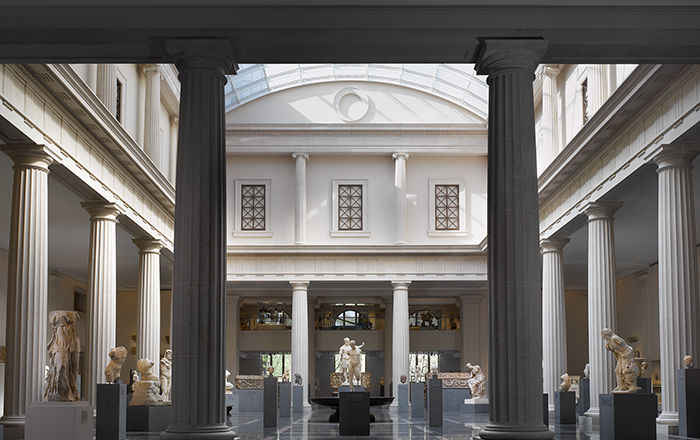Glass gold-band mosaic bottle
Translucent cobalt blue, turquoise green, opaque white, and colorless encasing shattered gold leaf.
Everted, horizontal rim with rounded underside to lip; cylindrical neck, with horizontal indent around base; globular body; slightly concave bottom.
Gold-band mosaic pattern formed from a single serpentine length of layered canes formed in the following order: green outlined in white, blue (appearing light blue in places when backed by white), colorless with gold leaf, and blue again; the length is wound three times round body, being fused together across bottom. A single fine horizontal line incised on upper surface of rim near outer edge; a band of three parallel horizontal grooves around upper body; another single horizontal groove on body at point of greatest diameter; and a band of two concentric grooves around outer edge of bottom.
Intact, except for one small chip in base of neck and some short internal cracks; slight dulling and pitting, small patches iridescence, and creamy brown weathering.
Rotary grinding marks on exterior.
Gold-band cast glass was a particularly opulent type of early Roman glassware. It combines canes of brightly colored translucent and opaque glass with strips of gold leaf encased between layers of colorless glass. Only a limited number of vessel shapes were made in this way, and some of the most common are small globular or carinated bottles such as these. They were presumably used to store expensive cosmetics and perfumes.
This image cannot be enlarged, viewed at full screen, or downloaded.
This artwork is meant to be viewed from right to left. Scroll left to view more.





